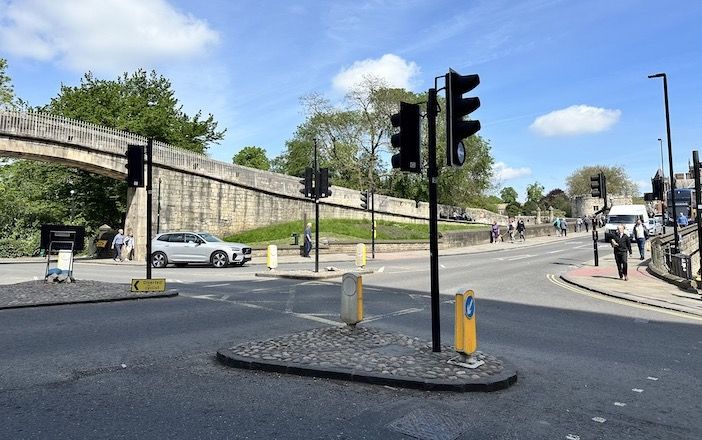PTV Group, part of Umovity, has expanded its real-time traffic management software PTV Optima in the City of York, UK, enabling implementation of traffic signal strategies in real-time, resulting in fewer jams, lower emissions, and improvements to journey times of up to 8% in the peaks.
The traffic management software uses live data, fast computer processing and modelling technology to predict how traffic will look on the York network in a rolling 15-minute future horizon, providing an estimation of what is happening on the road in real time.
It then runs different signal timing options to predict the most effective signal strategy, which network managers within the City of York control room can then implement to change the signal plan to the best alternative and reduce the size of the jams that would have been expected to build.
“The model is continually updating itself, ingesting real-time data and reworking its predictions to react to changing conditions, alerting traffic managers to abnormal incidents and giving quantitative advice on possible mitigation strategies,” says PTV UK technical director Michael Oliver.
This is not only effective in the case of unexpected incidents, but also in day-to-day traffic, as no two rush hours are the same, so no two days of traffic management are the same either. The model constantly takes in real-time data from that moment’s network conditions and predicts the best scenarios to manage that demand.

The PTV Optima solution has been used around the world, in cities including Rome, Strasbourg, Turin and Lublin. In Taichung and Vienna, this has led to, among other things, a reduction in travel times from 10-50%, and the delays decreased at junctions by up to 60%, meaning fewer vehicle stops and up to 15% fewer emissions.
In York, traffic managers in the control room work closely with traffic modelers leveraging their expertise to optimize traffic flow. Historically, these professions have acted separately. Modelers used road network plans and data to design future improvements, while operators managed the existing infrastructure.
Now traffic managers can increase capacity by using infrastructure on site or other mechanisms available such as ITS. Additionally, traffic models can predict traffic patterns even for areas with limited data, effectively “filling in the blanks” based on surrounding roads. This combined knowledge allows for a more proactive and data-driven approach to traffic management.
“We have found that this is a seismic change to the operator’s ability to manage traffic on a network in the most optimal way,” says Oliver. “Technology provides a cheaper, quicker and better solution to the traditional response to traffic jams, which is to increase lane capacity, either through widening or building a completely new road. PTV Optima helps to squeeze additional capacity out of existing infrastructure by providing a strategic perspective to localized control.”
Under the UK Government’s Plan for Drivers, money is being invested in an Intelligent Traffic Management Fund (ITMF) in the UK giving authorities the chance to deploy advanced technology for traffic control, using emerging technologies to optimise vehicle, bus, cycle and pedestrian flow and balance traffic across city centres. PTV Optima can be the decisive tool here, which can be implemented in a variety of ways depending on the town or city, and the data available.
A before-and-after comparison for the York project has demonstrated improvements to journey times of up to 8% in the peaks, and significant reduction to the variation of journey times across the day. The project was implemented for specific junctions in the city and proved that potential benefits could be expected to far outweigh the cost should the approach be upscaled across the city.





